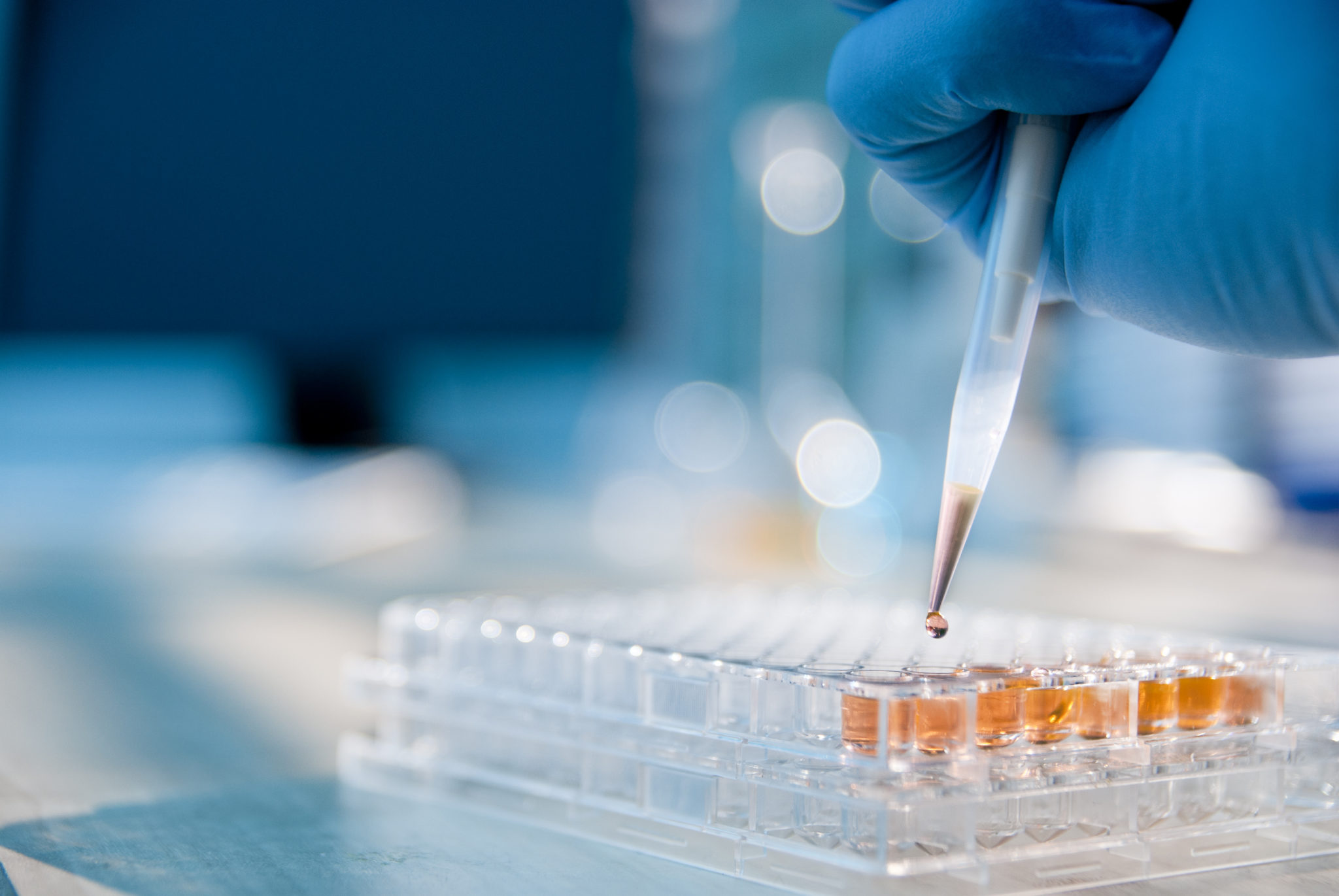UK Supreme Court upholds appeal by biotech firm Kymab to revoke antibody patents held by US giant Regeneron
Published on 30th June 2020
Judgment overturns the Court of Appeal's decision on ground-breaking technology, rebalances the legal equilibrium on sufficiency, and grants reprieve to leading UK biotech company.

One of the three central pillars of patent validity has come under review by the UK Supreme Court in Regeneron v Kymab [2020] UKSC 27, which has provided a decision that goes to the heart of what it takes to ensure a patent's coverage matches its actual technical contribution to the world.
Is this decision important? Yes, it goes to a fundamental issue of patent law. Is it a good thing? Yes, it has clarified the law of sufficiency and what is required for a patent to be valid. Could the loser, Regeneron, or any patentee in the same position, have avoided the outcome? Yes, absolutely – by ensuring their claims covered only that which they had enabled.
There are a number of notable features of this case: the incredibly complex and ground-breaking technology of both parties; the fact that a panel of five non-patent judges overturned the Court of Appeal's specialist patents judges (four-to-one with Lady Black dissenting); the simplicity and clarity of the leading judgment, which has rebalanced the legal equilibrium on sufficiency; and the lifeline that has been thrown to one of the UK's star biotech companies by this judicial reprieve.
Legal background
For a patent covering an invention to be valid, at the time of filing it must be novel, inventive and sufficiently clearly articulated in the patent document that it can be performed by someone of ordinary skill without them having to employ undue experimental burden, or inventiveness of their own, to get it to work.
This requirement goes to the heart of the patent bargain – only if the patentee has made a full enough disclosure of their invention for the world at large to implement it, shall they be entitled to the 20-year patent monopoly. One feature of this sufficiency requirement is that the claims (which describe the extent of protection sought by the patentee) must be enabled across their full scope. If an invention is a new class of products, which may have particularly beneficial properties, the language used in the claims can be very precise and narrow (that is, limited to the individual products described) or it can be at a higher, more general level described to include members of the class not specifically made and identified in the patent. Generally, the patentee will want to secure a monopoly in the broadest possible terms. But both approaches will be subject to the same requirement of "sufficiency".
There are a number of different ways in which a patent can be insufficient – this case concerned "breadth of claim sufficiency".
Technical background
Therapeutic monoclonal antibodies are one of the most significant tools for treating disease in the relatively short history of commercial biotechnology. Regeneron and Kymab now compete in the same space – each offering "transgenic mice" for the production of monoclonal antibodies, but Regeneron was a pioneer in the field.
Regeneron's patent of February 2001 covered a new type of transgenic mouse. This produces monoclonal antibodies from human antibody genes inserted into its genome, replacing some of the innate mouse genes coding for mouse antibodies with human genes (known as the "reverse chimeric locus"). As with the benefits of a naturally diverse immune response, molecular biologists are interested in generating a broad panel of potentially useful antibodies from their monoclonal platforms.
Regeneron's insight was that trying to substitute all of the mouse antibody genes for human genes left the mice immunologically sick and meant that they produced only a meagre repertoire of antibodies that could be harvested for further development. Regeneron found that smaller targeted inserts of human antibody genes coding for the critical and highly variable binding regions (alongside large inserts of mouse genes to produce the rest of the antibody structure) resulted in healthier mice that produced vastly greater numbers of useful antibodies.
Nevertheless, even inserting small amounts of human genetic material into a mouse genome was a challenge at the priority date. The patent included a particular experimental example of inserting larger numbers of human genes that, in practice, did not work. Regeneron's patent, in spite of this, sought to cover all genetically modified mice containing these chimeric human-mouse antibody genes and also the downstream therapeutic human antibodies made from using these mice.
The decisions
The highly experienced first-instance patents judge found the patent invalid for insufficiency because the key example of the patent did not work. He was reversed by the Court of Appeal (involving the two most experienced patents judges in the UK), who characterised Regeneron's invention as a "principle of general application". As such, they held that it was enough that all mice within the claimed range could be expected to benefit from Regeneron's principle of general application and the US company was not required to enable its invention across the full scope of what was claimed. And since Kymab made use of this principle – albeit by a method of inserting larger cassettes of human DNA than were possible at Regeneron's priority date – it was found to infringe a patent that was held valid.
The majority of the Supreme Court disagreed and has now affirmed the traditional view that for product claims defined by class to be sufficient, it is necessary for the skilled person to make, or be able to make, substantially all embodiments of products within the scope of the claim without undue burden. At the heart of the Court of Appeal's error was confusion over the potential benefits of "the invention" (preventing murine immunological sickness using the reverse chimeric locus of the patent), with the technical contribution of the claims (a new class of product such as a new transgenic mouse).
The Supreme Court set out the principles required for a patent to be sufficient, which include the following:
- The UK's sufficiency requirement is imposed by Article 83 of the European Patent Convention; the extent of the monopoly must correspond with contribution to the art.
- Patentees choose how to frame their monopoly and how broadly they claim it – but they must not claim that which they do not enable.
- Ignoring de minimis or irrelevant exceptions, claiming products that cannot be made at the priority date inevitably means the patentee has exceeded their contribution to the art.
- The patentee does not have to demonstrate in the patent disclosure that every embodiment within the scope of the claim has been tried, tested and proved to have been made; but if they have drafted their claim broadly according to a general principle, they must be prepared later, if challenged, to lose their patent if it transpires that a significant and relevant part of the claimed range could not be made to work as at the priority date.
- Enablement is not established by showing that products within the relevant range deliver the same general benefit intended to be generated by the invention, regardless of how ground-breaking it is, as Regeneron had argued.
Comment
The Supreme Court has not changed the law of insufficiency. There is no seismic shift in patent law. It has merely re-emphasised the proper position under the existing legal provisions. In doing so, the position on sufficiency has been clarified and certainty has been restored. This decision is about ensuring that patentees are only allowed claims that match their technical contribution.
The Court of Appeal had seemingly been seduced by the ground-breaking nature of Regeneron's "invention" – the reverse chimeric locus and the beneficial effect that it had on monoclonal antibody production. It had been willing to overlook the legal requirement of enabling across the breadth of the claim, when Regeneron had not, as a matter of fact, shown that it was possible to introduce DNA inserts at the higher end of the range they had claimed.
The Court of Appeal had alighted on the concept of a "principle of general application" (which has never been defined in statute but has only been the subject of pithy exposition in the case law). It used it justify why exceptional patents, where the invention was sufficiently ground-breaking, would not need to adhere to the normal strict requirements of sufficiency.
At the time, the Court of Appeal's finding had been seen as a pro-patentee decision, because it appeared to water-down the requirement to demonstrate a patent was sufficient across the breadth of its claims. However, it consequently increased uncertainty both for third parties, who had more difficulty establishing whether patents that did not work in some aspects were nevertheless valid and sufficient, and for patentees, who were left unable to determine whether their inventions would be correctly characterised as a "principle of general application" or not.
The majority of the Supreme Court disagreed with the Court of Appeal's approach and has put sufficiency back in its cage. The onus now, as before, is on patentees to ensure their claims are carefully crafted to match their actual technical contribution to the art. There are no longer special cases or exceptions to this requirement. As the majority of the Supreme Court said, it is of course open to patentees to draft product claims broadly according to a general principle. In doing so, they must convince the examining patent office that it is reasonably likely that the invention works for all products claimed.
Alternatively, the patentee could hold off from filing until it obtains more technical data to support the broadest claims, but it runs the risk that competitors may file their own patents in the meantime. But, by filing early and claiming broad, they are exposed to the risk, if later challenged, that they may lose their patent if it is shown that a significant and relevant part of the claimed range could not be made to work at the priority date. This is the classic dilemma of patent-filing strategy. Regeneron took a risk. It could have avoided its ultimate fate by only claiming the range of DNA inserts that it had shown to work at the priority date, rather than seeking to future-proof the patent by claiming iterations that it was not technically possible to achieve at the time.



